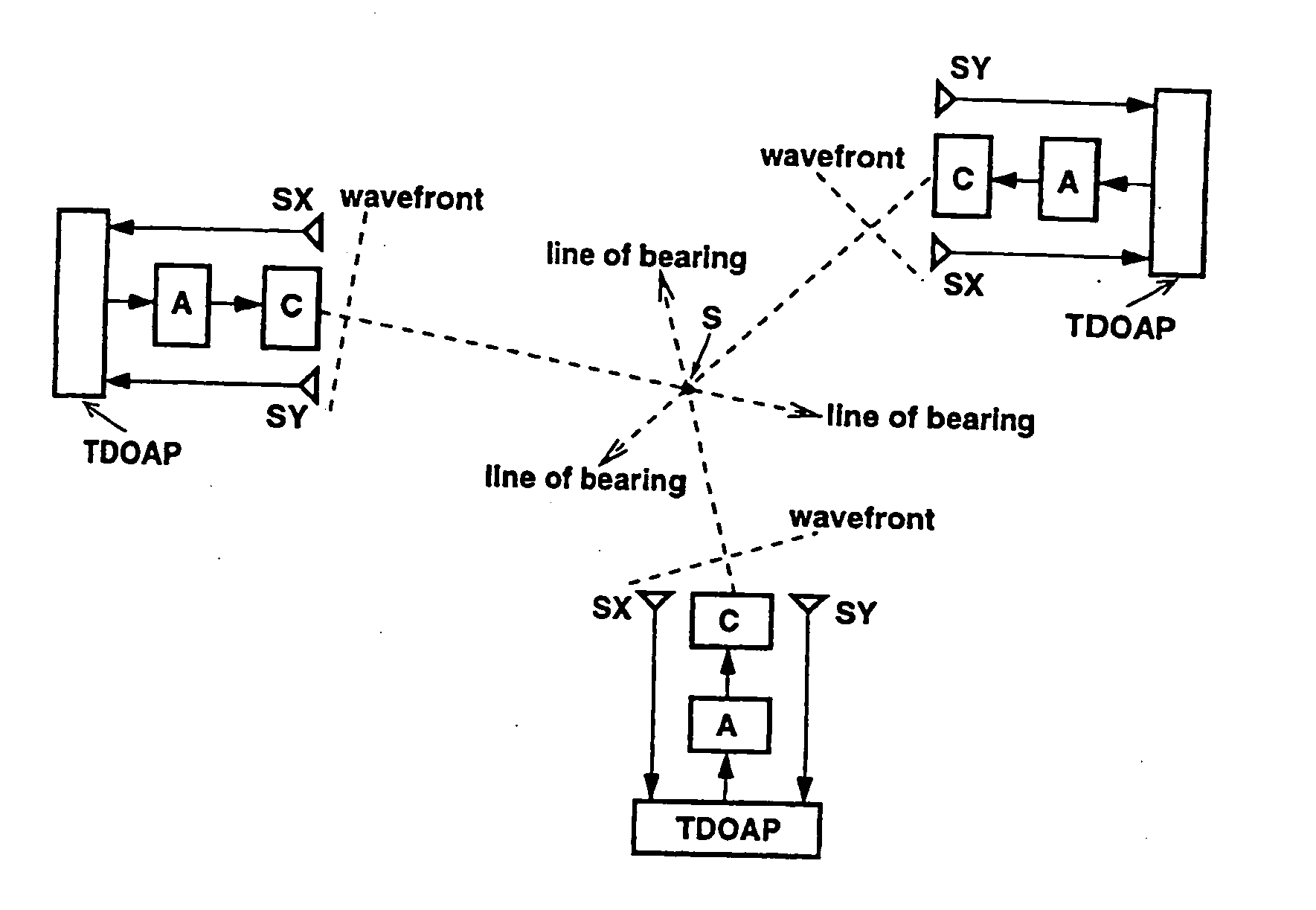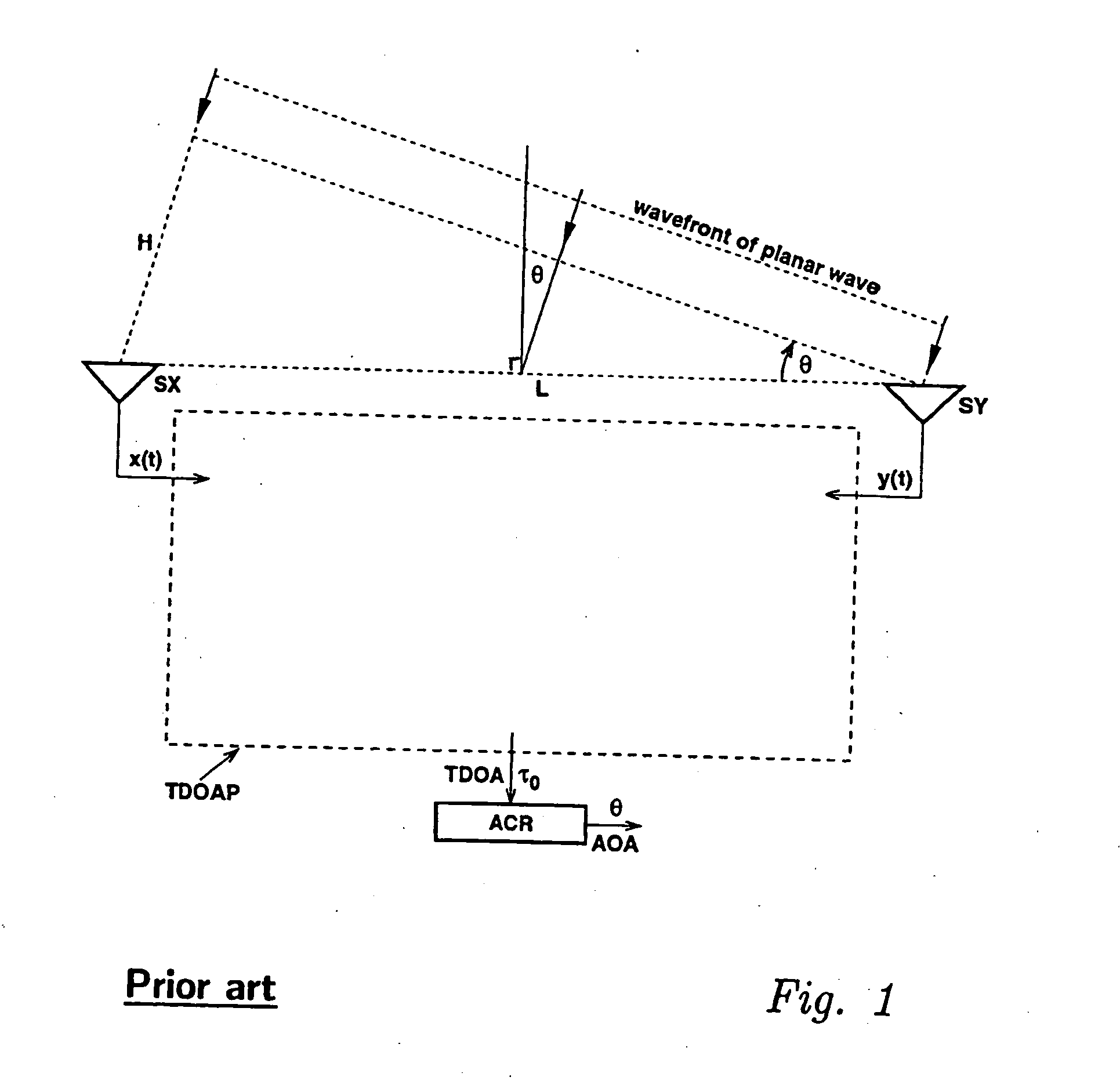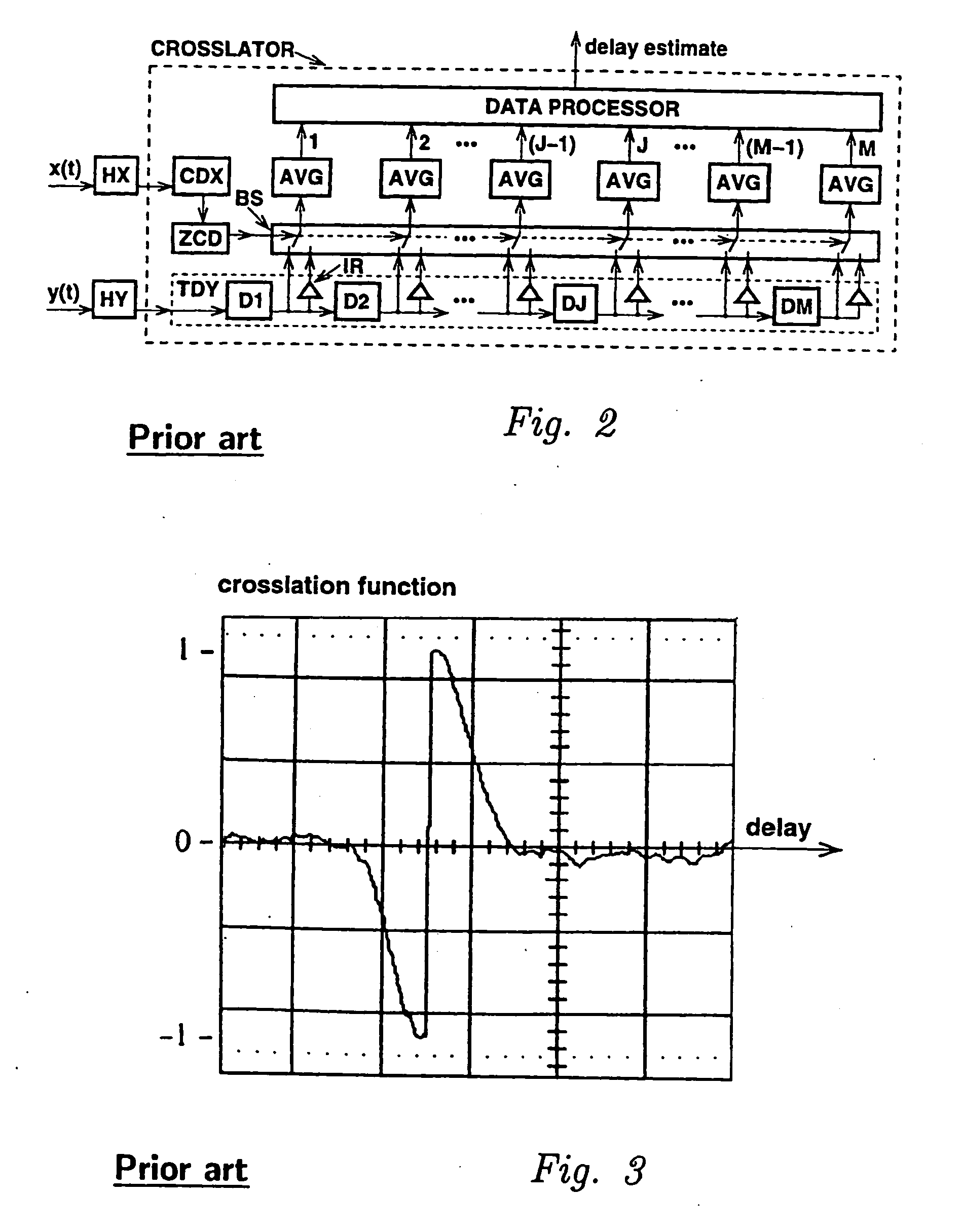Determination of time-difference of arrival and angle of arrival
a time-difference of arrival and angle technology, applied in the field of time-difference of arrival and angle, can solve the problems of limited practical use of conventional crosscorrelation techniques based, explicitly or implicitly, on the assumptions of signal stationarity and noise gaussianity, and the disclosed crosslation is not well suited to time-difference of arrival (tdoa) determination. , to achieve the effect of mitigating the effect of noise in each signal
- Summary
- Abstract
- Description
- Claims
- Application Information
AI Technical Summary
Benefits of technology
Problems solved by technology
Method used
Image
Examples
first preferred embodiment
[0048]FIG. 6 is a block diagram of a time-difference of arrival (TDOA) processor (TDOAP) arranged to operate in accordance with the invention and suitable for use in the network of FIG. 4. The processor comprises two hard limiters, HX and HY, two interconnected crosslators, XLX and XLY, two arrays of identical difference circuits, R, and a data processor DPR.
[0049] The crosslator XLX comprises a cascade DLX of M unit-delay cells D, a bank of switches BSX, (M+1) identical averaging (or integrating) circuits AX and a zero-crossing detector CDX. Each delay cell D can supply both a signal and its polarity-reversed replica.
[0050] Similarly, the crosslator XLY comprises a cascade DLY of M unit-delay cells D, a bank of switches BSY, (M+1) identical averaging (or integrating) circuits AY and a zero-crossing detector CDY. Each delay cell D can supply both a signal and its polarity-reversed replica.
[0051] Two input signals, x(t) and y(t), to be processed jointly by the time-difference of a...
example
[0067] Consider the sensor geometry depicted in FIG. 1 and assume that the distance L between sensors SX and SY is equal to 5 cm, and the angular field of view (FOV) of each sensor is limited by −60°τmax=L sin 60∘vs≈127.4μ s[0068] where vs=340 m / s is the speed of sound; the required time resolution Δτ is Δτ=L sin 1∘vs≈2.6μ s[0069] Therefore, for the design purposes, it can be assumed that Δτ=2.5 μs. Consequently, each delay line will consist of 103 delay cells, each introducing a delay of 2.5 μs, which results in a total delay of 257.5 μs. [0070] When cell number 52 is selected to be the centre cell, the range of available delays will be ±127.5 μs. For optimum system operation, the rise time and the fall time of binary waveforms produced by hard limiters should be less than 2.5 μs.
The disclosed time-difference of arrival (TDOA) processor: [0071] utilizes concurrently trigger pulses obtained from one of the signals x(t) and y(t) to synchronise the analysis of the oth...
PUM
 Login to View More
Login to View More Abstract
Description
Claims
Application Information
 Login to View More
Login to View More - R&D
- Intellectual Property
- Life Sciences
- Materials
- Tech Scout
- Unparalleled Data Quality
- Higher Quality Content
- 60% Fewer Hallucinations
Browse by: Latest US Patents, China's latest patents, Technical Efficacy Thesaurus, Application Domain, Technology Topic, Popular Technical Reports.
© 2025 PatSnap. All rights reserved.Legal|Privacy policy|Modern Slavery Act Transparency Statement|Sitemap|About US| Contact US: help@patsnap.com



